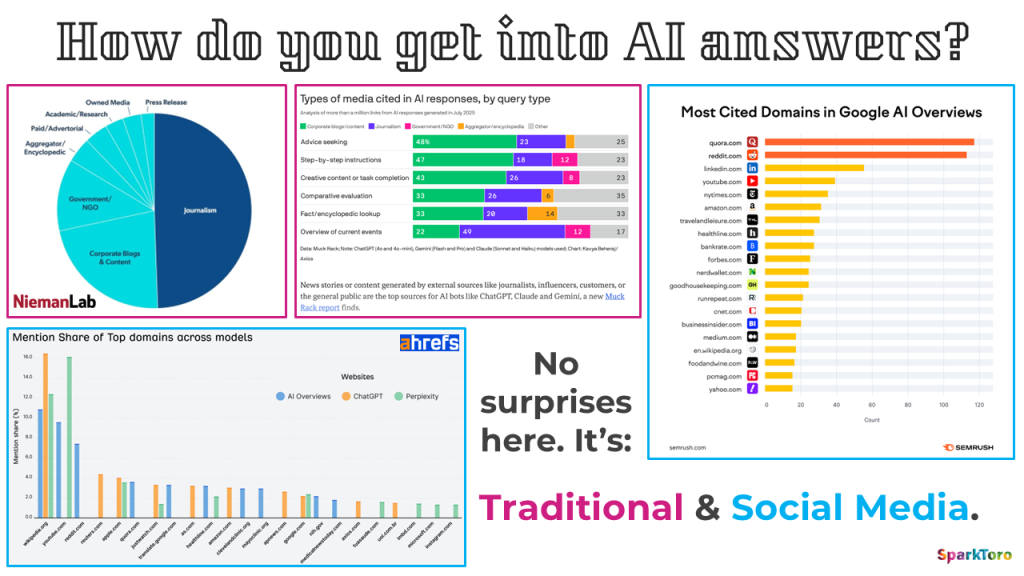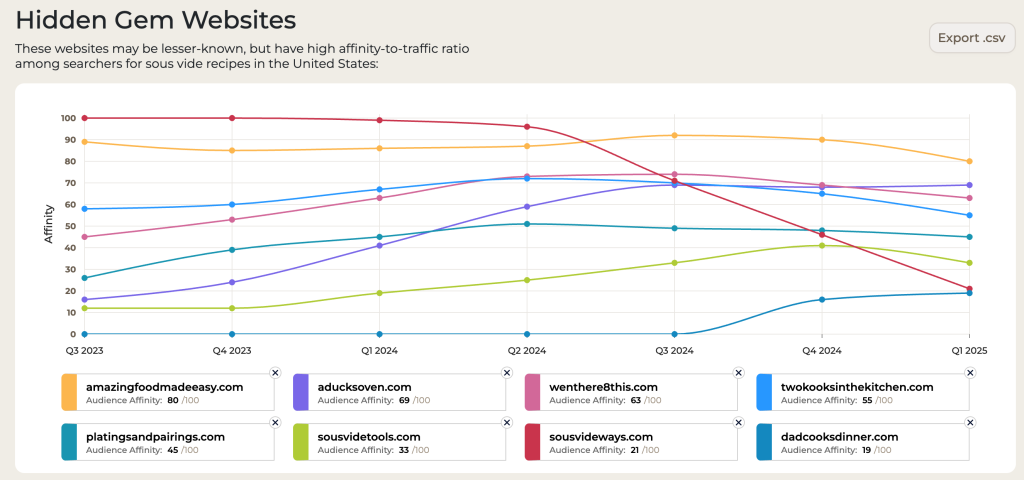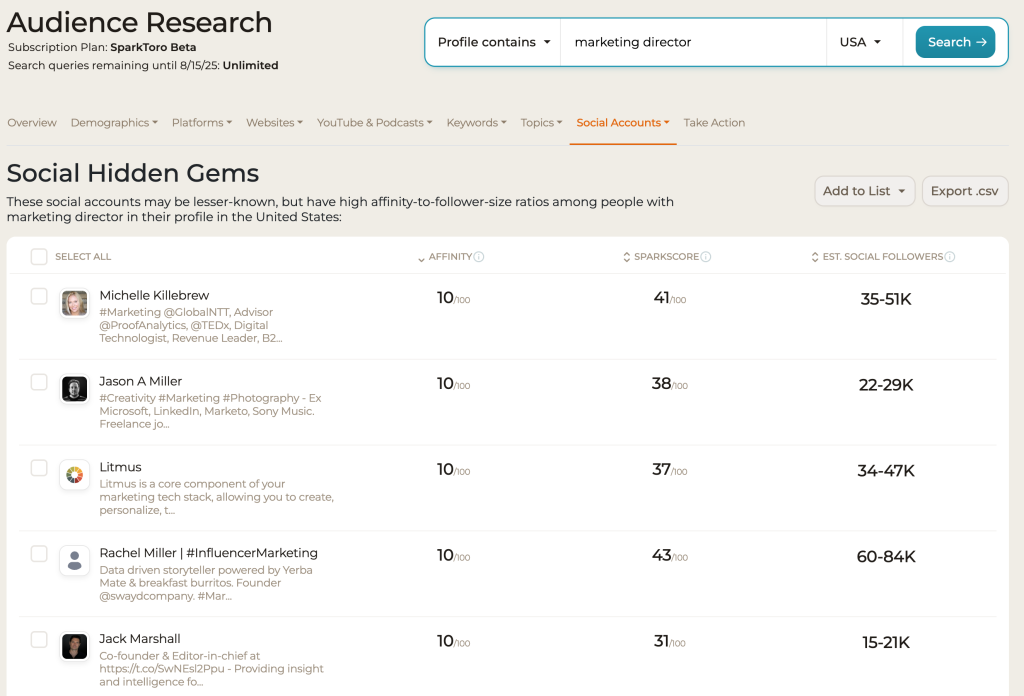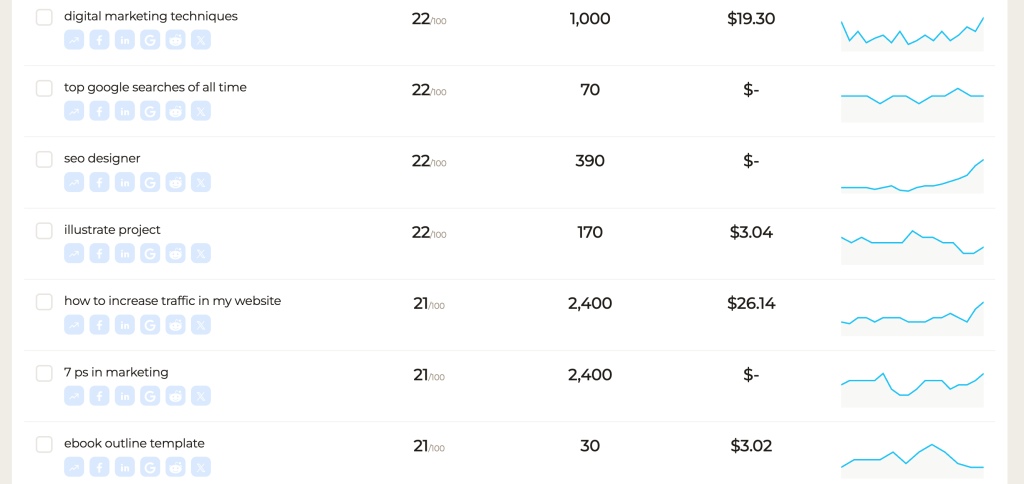It’s always, “How do we get mentioned by ChatGPT?!” and not, “How can we be worth mentioning by ChatGPT?” Fortunately, this blog post is your guide to bridging that gap. Journalism is now the most cited source in AI-generated responses to current event queries, according to a new report by Muck Rack. And well more than half of websites receive AI traffic, says Ahrefs.
ChatGPT and Gemini in particular tend to cite Reuters, the Financial Times, Time, Forbes, and Axios most — though Claude cites journalistic sources less often, instead citing academic, federal and technical sources more often. (Worth noting that the Financial Times, Time, and Axios all have AI licensing deals with OpenAI, but not with Google.) As for Google AI Overviews, the most cited domains are Quora, Reddit, LinkedIn, YouTube, and then the New York Times, according to Semrush. Oh, and that podcast you’re considering? If “the podcast is on YouTube, and then YouTube generates a transcription file, then Google, in particular, will cite it,” says Matt Dzugan, senior director of data at Muck Rack, via Axios.

We’re entering an era where third-party content about you may matter more than the content you produce yourself — because:
- Journalistic sources get picked up by AI tools and LLMs
- News articles get shared widely on social platforms
- They also tend to earn natural backlinks, helping with SEO
- And, importantly: readers trust third-party reporting more than brand content
Smart marketers already know earned media isn’t just “good PR.” It’s strategic. One way to move this needle is to focus on getting mentioned by journalists. A quote in an article might now have more downstream reach than a blog post or press release.
Fortunately, you can do this low-lift, high-leverage PR tactic yourself. You don’t need a PR firm on a monthly retainer or a product launch to score earned media. And you don’t need to be a Fortune 500 executive for a reporter to listen to you. What you do need is a fresh, relevant, and authoritative perspective. Reporters are always looking for insights from practitioners, founders, and subject-matter experts, especially in niche fields. Nail that contributing quote and get seen a number of times, and eventually, you’ll appear in content that AI might later surface.
How to Start Contributing to Stories
To put yourself in a position where you’re even a contender to be quoted, put yourself out there both proactively and in a way that’s working in the background for you. I elaborate below with a sustainable workflow that has some “set it and forget it” and “go out and get it” tactics.
Discover, curate, and understand your media landscape.
If you’ve ever engaged a PR firm you might already have a list of media outlets, publications, and reporters. If not, the best time to start is now! Start compiling a list of the media that influences your audience. This is likely a solid mix of press publications, trade/niche media, podcasts, YouTube channels, and company blogs or publications (which might be most applicable to B2B audiences).
Set up your feeds so you can easily find reporters and influencers. You can make Twitter/X lists, create a saved LinkedIn Search if your audience is B2B (see screenshot below), and/or create a fake Instagram account or “finsta.” This is an alternate Instagram account that you’ll use specifically to find your audience and train your algorithm to serve you content in your Explore tab that your audience is likely to consume. This doesn’t have to be a totally new personal finsta — your company Instagram account might already work well for this. Start engaging with them when it feels natural and appropriate.

Set it and forget it (but I mean… don’t actually forget it).
Sign up to be a source on platforms where writers and reporters are looking for subject matter experts. Try platforms like Help a Reporter Out (HARO), Help a B2B Writer Out, Qwoted, and Terkel. Keep an eye out for relevant opportunities, and chime in whenever you can. You’ll have this working in the background for you while you proactively source your own opportunities, likely through social media or cold outreach.
Go out and get it.
Remember those social feeds you set up? Don’t forget to check those regularly. Incorporate it into an easy but intentional part of your day. Maybe it’s first thing in the morning after you clear your inbox, again before you break for lunch, and one last time before you wind down for the afternoon.
Amplify what’s relevant to you and comment when you can add value. Ideally, you’ll use your personal account for this so that those reporters know they’re actually talking to you. But the most important thing here? Actually read their work. Get familiar with what they write about. A Wirecutter editor isn’t necessarily a general editor; they might also be the person who oversees kitchen tools and gadgets specifically. This is important because knowing the nuance will make you a heckuva lot more successful in the next step…
Send 2 kinds of short, highly relevant email pitches.
Not constantly and definitely not on the same day. Don’t be a weirdo. There are two kinds of emails to consider:
The “get my foot in the door” email: “Saw your recent story on X — if you’re ever writing about Y, I’d be happy to share a POV.” Especially when this is your first pitch to a reporter, you’ll want to keep the door open. So make it as easy as possible for them to keep you in mind. Give them an easy out and make sure your email is skimmable and has a few relevant keywords. That reporter might archive your email and try to search for it again later when they’re working on a new piece that’s relevant to you.
The specific pitch email: “I saw your article about packable picnic lunches last week. *My company and I actually ran a summer survey to our audience of eco-conscious consumers and found that 50% of them are looking for more compostable packaging to help lighten their loads post-picnic. We were surprised because we thought this number would be smaller. I’m happy to elaborate on these findings (even over email) if you find yourself wanting to write a follow-up article” Most likely, this is the kind of email you’ll send after you’ve established rapport. Or not. Some reporters are cool with totally cold pitches. That’s why you follow their work, right? 🙂 You’ll somewhat-easily figure out — at least directionally — how reporters want to be pitched to.
*This is obviously a made-up example.
Keep your quote tight, specific, and insightful.
…when you do get the green light to contribute. Think: 1-3 sentences, jargon-free, with a clear point of view. Aim to say something the journalist can’t easily Google. Use your niche expertise but make your point easy to understand. Remember, this might ultimately be the average person who reads the final news article.
Track your mentions and reuse them.
Got quoted? That quote now lives forever. Share the link, turn it into a carousel on social media, and save it in a “Press” page or brand kit. Better yet, create a standalone content piece (a blog post or a video tutorial) that connects the dots between your quote and your product or offering. The point is: Reduce. Reuse. Recycle. Rihanna. (My fellow “Broad City” fans are fist pumping with me, I know it.)

Do this to save time and make it a lot easier on yourself…
When you get a lay of the land, you might not know where to start. When you set out to curate yourself a social feed, you might not know who to follow. And when you read news coverage, you might not know the topics and keywords that are most relevant to your audience. We at SparkToro can help you do that instantly. (Come on, you thought you weren’t going to get the soft ball pitch? At least I have screenshots so you can judge for yourself.)
Find the media, press, and websites that actually reach your audience.
Search your audience, then look at the websites that influence them! I searched the audience that Google “sous vide recipes.” Here are the hidden gem websites they visit often, which include Amazing Food Made Easy, and Platings and Pairings. I’d try to pitch to them if I sold to this audience:

Keep up with the most relevant, influential social media accounts.
Let’s try a B2B audience. For people who self-describe on their public social media as “marketing directors” here are the hidden gem social accounts they follow — which is the same feed I would curate for myself if I’m trying to reach them:

You can see bigger and mainstream social media accounts as well. I personally like to find the Hidden Gems because I feel I’m likelier to actually reach the person and make an impact.
Learn what your audience is talking about — then bake those topics into your pitches.
I can easily see that people who visit sparktoro.com are Googling keywords like “digital marketing techniques” and “7 P’s in marketing” (which, by the way, I don’t know, so maybe I’m the frequent SparkToro visitor who Googles what those are). I can also see the Subreddits they hang out in. So now I have a good picture of what people in my audience are generally searching for online, and what they’re talking about on /r/marketing/ and /r/Entrepreneur/. This gives me a sense of the problems they have, and how they talk about them. Perfect inspiration to help me speak their language. If I can, I’ll play some 4D chess and consider this information as I contribute quotes to reporters’ stories.

To be clear, SparkToro is built for audience research, not smarmy outreach. If you’re trying to spam as many as possible as possible, sorry, we’re not the software for you. But fortunately, when you do use SparkToro, you’ll never feel like you’re spraying and praying. You’re surfacing where the actual influence lives, and positioning yourself to show up in it.
With the advent of new tech, we’re seeing marketing come full circle. Classic marketing functions like PR are now more powerful than ever. A well-placed quote can drive awareness, search interest, trust — and even AI visibility.
All it costs is a little time and a sharp POV. (And fine, maybe also $50 a month if you buy a monthly Personal subscription to SparkToro.)